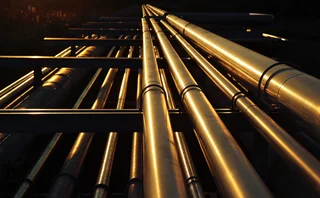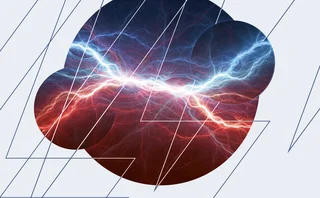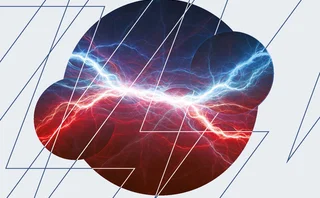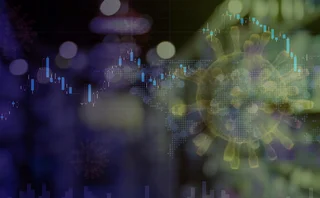
German power market outlook
This month marks the one-year anniversary of Germany announcing its intention to abandon nuclear power. Since then a number of fundamental shifts have occurred in the German power market, which are expected to impact prices during the year. Jay Maroo reports
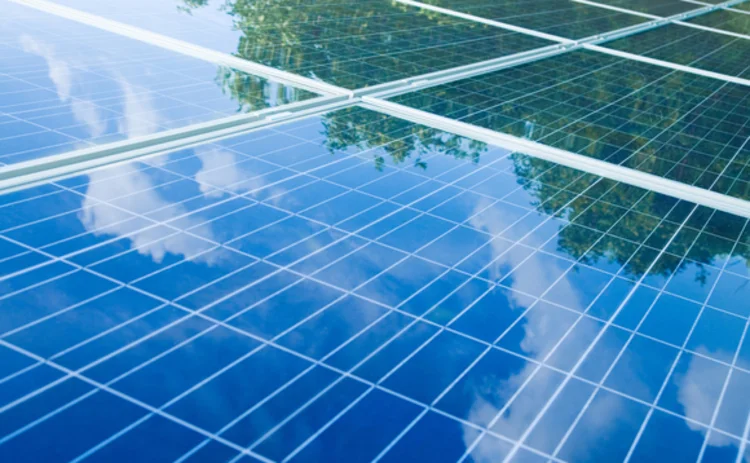
In May 2011, German chancellor Angela Merkel announced the country would terminate all its nuclear activities by 2022. Some had thought the country would struggle to cope with the reduction in supply and as a result expected power prices to increase. However, one year on, German power prices continue to tumble. Experts say the impact of an increase in renewables generation in conjunction with a poor demand outlook means hedgers and traders will need to be wary of a number of price dynamics in the medium term.
Over the past 12 months, Germany, the largest and most liquid power market in Europe, has seen sharp declines in prices. The April 2012 German base-load futures contract listed on the European Energy Exchange has fallen to €40.25 per megawatt hour (MWh) from the 12-month-high of €63.75/MWh reached in August 2011.
While there are a number of factors impacting power prices, the main reason for the fall is the fundamental supply and demand balance. The consensus among experts is that power demand in Germany is unlikely to grow in the near future due to sluggish economic activity. However, by contrast, supply, in terms of total capacity, is on the rise due to an increase in renewables and the arrival of more thermal coal generation.
Demand
According to experts, German power demand is expected to remain sluggish for the medium term – similar to that of other modern industrialised European countries – due to the lack of economic growth. Economic data releases coming out of Germany recently have been lacklustre. German gross domestic product is forecasted by the country’s government to rise by only 0.7% this year. More recently, the German Purchasing Managers’ Index, published by data provider Markit, for manufacturing fell to 46.2 in April, down from 48.4 the previous month and from 60.9 in March 2011. A value below 50 signifies contraction.
“The demand side has been disappointing and the prognosis for it is not good,” says Paolo Coghe, senior European power analyst at Société Générale Corporate & Investment Banking (SG CIB).
Data collected by the German energy balances working group, Arbeitsgemeinschaft Energiebilanzen (AGEB), shows that primary energy consumption in Germany in 2011 contracted by 5.3% year-on-year to 13,374 petajoules – a record 10-year low.
In a recent report published by Coghe he says: “The recessionary environment in 2012 will not be conducive to material demand increases in mature electricity markets such as the German one.” As a result he expects German power demand to grow only marginally by 0.7% in 2012.
In comparison to demand issues, which tend to be long-term and structural in nature, the supply side is much more dynamic.
Supply
Two months after the Fukushima disaster in March 2011, the German government U-turned its stance on nuclear energy and announced it would begin terminating all nuclear plants in the country. This saw the closure of eight facilities in 2011 and, as a result of the decommissioning, 8.3 gigawatts (GW) of capacity was removed. It had been anticipated by some that this would result in a sharp tightening in supply but due to the surge in renewables activity the closures are now expected to be more than compensated.
“Germany will have a lot of capacity floating around the system from new renewables and thermal. It’s looking quite long capacity,” says Trevor Sikorski, director of carbon markets at Barclays Capital.
According to a report published by SG CIB, installed solar (photovoltaic) capacity in 2011 grew 43% year-on-year to reach a total of 25GW. Although Coghe says the rate of growth in solar will begin to slow from this year, he still expects additions of around 4GW per year for the next three years. By 2015, Coghe says total solar installed capacity will be close to 40GW.
Wind generation also had significant growth, although not on the same scale as solar. Last year 2GW of wind capacity was added to the already existing 27GW of installed capacity. Coghe forecasts total wind capacity to reach 36GW by 2015.
At first glance, it would seem that the huge additions in renewable capacity should more than compensate for the reduction in nuclear energy. However, where renewables are concerned, it’s important to distinguish between added capacity and actual added generation.
Germany may have around 76GW of solar and wind capacity by 2015 but due to the intermittent nature of solar and wind it is certain that there will not be an additional 76GW of generation. “It is customary to heavily derate renewables because of this reason,” says Coghe. To compensate for the termination of nuclear (non-intermittent) power there is a need for at least some increase in non-intermittent generation.
To resolve this, Germany is expected to significantly increase its thermal generation. The country plans to add 10 thermal coal power stations over the next two years, which will result in a capacity increase of 11GW.
“It’s all under construction and has been under construction for a long time so I would say it’s fairly likely to arrive,” says Sikorski. Even taking into account both the expected nuclear and non-nuclear closures, Sikorski believes generation from renewables and thermal will “more than compensate.”
With this transformational shift in Germany’s power mix taking place, what will the impact be on power prices in the coming months?
Flat prices not so flat
According to experts, German power prices for this summer will be closely linked to the weather, and are expected to fall due to increased renewable generation. Prices for the second-month German base-load futures contract have been on a downward trend for the past 8 months, falling 37% from €63.75 in August to €40.25 for the base-load April-2012 contract.
Konstantin Lenz, managing director at German energy consultancy Lenz Energy, says that historically the €40-mark usually offers strong support at this time of the year but with the right weather (sunny and windy), spot prices in August could be close to €30–35.
Coghe forecasts the calendar-2013 base-load contract to remain close to the €50-mark for this and the next quarter. However, as the European winter approaches at the end of 2012, Coghe expects the decline in output from renewables and a seasonal increase in demand to cause prices for the German calendar 2013 base-load contract to move up to €53.50 for the fourth quarter.
While the flat price of power is closely watched, it is the spreads that give the best picture of where utilities can (or cannot) derive value.
Power spreads
“The spread is what’s fundamentally interesting about power markets and I think the biggest impact of renewables has been on spreads,” says Sikorski.
Since the start of this year, the clean dark spread (power minus coal and carbon costs) and the clean spark spread (power minus gas and carbon costs) have been moving in completely different directions. While the clean dark spread has trended upwards, the clean spark spread has tumbled (see figure 1).
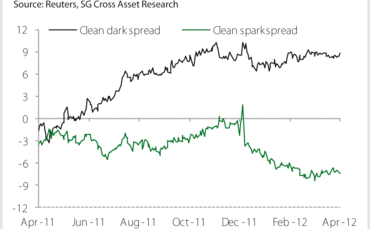
Based on prompt spread prices at the time of writing, utilities operating gas fired plants in Germany are losing €16.11 for every megawatt of power they supply, while those with coal-fired plants are earning €5.20. According to experts, the divergence in spread values is largely attributable to the rising price in European gas.
“The reason behind it is the strong gas price. This will only change if more power from gas plants is needed – for example, when the next nuclear power plants go off,” says Lenz.
As well as being a measure of utilities’ profitability, Sikorski says the spreads can also be viewed as a barometer for capacity. The higher the spread, the more incentive there is for utilities to build capacity to take advantage. Spread prices reflect the current situation where there is little to no growth in gas-fired generation compared to thermal. In the next two years only 1.2GW of gas fired capacity is expected to come online compared to the 11GW from thermal generation.
Even though the year-ahead clean dark spread is much higher (+€11.50) than the clean spark spread (€-8.06), it is still well below the €20–25 range that Sikorski says would be needed to recover new entry costs. “It’s screaming out ‘you’ve got way too much capacity in the system’. We are quite bearish on the spreads,” he says.
Lenz also believes spread prices will move lower. “The clean dark spread was quite stable in the past half year, but I think it could go a bit lower.” Due to the effect of more photovoltaics and renewables, Lenz believes the spread could fall to €6–7 over the next two years.
Variations between countries
Another interesting point when it comes to prices is the difference between those in Germany and other major European power markets. In March, the UK second-month base-load price moved above the German price for the first time since August 2011. The current premium of the UK price over Germany is +€14.62. At the start of this year, German prices were at a +€0.27 premium to UK prices. As a result of this, German power suppliers that have operations also in the UK may be able to partially offset their losses from declining local margins.
Sikorski says the reversal in this premium is down to the falling carbon price. Since March, Ice December-2012 European Union Allowances (EUAs) trading on the European Climate Exchange have fallen 19%. “Carbon has been weak, which has a bigger reducing impact on Germany pricing due to the amount of coal that’s pricing in,” says Sikorski.
Coghe points out that seasonal effects are also exerting an influence. “The behaviour you are seeing is a little seasonal and resulting from the large amount of renewables in Germany,” says Coghe. He says this difference is likely to continue throughout the summer and so in principle this is an opportunity that utilities with operations based in the UK and Germany can take advantage of. “If companies have transnational management and are convinced of this switch, they may be doing something about it,” he says.
A comparison between Germany and France is also interesting due to the fact that the countries share a power interconnector and in theory prices should be converging. Before its announcement to close nuclear generation, Germany was an exporter to France. At the time, prices for power in Germany were lower than those in France. However in 2011, next-year German power prices averaged €56.10, €0.10 higher than French prices. This reflected the fact that for a brief period of time Germany was importing power from France.
Essentially, the differential between German and French prices reflects the export/import balance between the two countries. Coghe says an increase in capacity and generation with flat demand prospects means Germany will increase the quantity and consistency with which it exports power to France. On the back of this, Coghe expects the French-German differential for next-year base load to increase from €-0.60 in 2012 to €+0.70 in 2013 and €+0.50 in 2014. “It’s going back to the way it used to be,” he says.
Peak load versus base load
Another area that’s being closely watched is the difference between base-load and peak-load prices. Power generated from renewable sources has zero cost and is given preferential access to the German grid. Solar energy is most abundant during peak time, so this leads to an increase in concentration of intraday supply. As a result, the price difference between peak-load and base-load prices has contracted and is also likely in summer months to contract further.
Coghe highlights this trend by showing that between 2008 to 2011 the difference between peak-load and base-load prices fell from 42% to 23% for year-ahead contracts and 20% to 9% for day-ahead contracts (see figure 2).
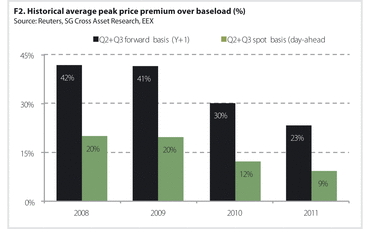
However, Coghe is unconvinced traders will be able to profit from this convergence. One of the biggest risks Coghe highlights is that as a result of the trade (long base load and short peak load), the trader would be net long weekend power. “What you have paid for may not be worth as much on the weekend and moreover it’s not a very liquid market [for trading weekend prices]. Traders would probably be reluctant to take such risks,” he says.
As we pass the one-year mark of Germany’s announcement to abandon nuclear energy, uncertainty arising from a complex supply situation and stagnant demand still remains. However, as the European summer approaches and new thermal capacity begins to come on stream – the 2.1GW Neurath BoA 2&3 power station is expected to be fully operational around August – market participants will look forward to seeing the development of a clearer long-term view of the German power market.
Only users who have a paid subscription or are part of a corporate subscription are able to print or copy content.
To access these options, along with all other subscription benefits, please contact info@risk.net or view our subscription options here: http://subscriptions.risk.net/subscribe
You are currently unable to print this content. Please contact info@risk.net to find out more.
You are currently unable to copy this content. Please contact info@risk.net to find out more.
Copyright Infopro Digital Limited. All rights reserved.
You may share this content using our article tools. Printing this content is for the sole use of the Authorised User (named subscriber), as outlined in our terms and conditions - https://www.infopro-insight.com/terms-conditions/insight-subscriptions/
If you would like to purchase additional rights please email info@risk.net
Copyright Infopro Digital Limited. All rights reserved.
You may share this content using our article tools. Copying this content is for the sole use of the Authorised User (named subscriber), as outlined in our terms and conditions - https://www.infopro-insight.com/terms-conditions/insight-subscriptions/
If you would like to purchase additional rights please email info@risk.net
More on Energy
Energy Risk Commodity Rankings 2024: markets buffeted by geopolitics and economic woes
Winners of the 2024 Commodity Rankings steeled clients to navigate competing forces
Chartis Energy50
The latest iteration of Chartis’ Energy50 ranking
Energy trade surveillance solutions 2023: market and vendor landscape
The market for energy trading surveillance solutions, though small, is expanding as specialist vendors emerge, catering to diverse geographies and market specifics. These vendors, which originate from various sectors, contribute further to the market’s…
Achieving net zero with carbon offsets: best practices and what to avoid
A survey by Risk.net and ION Commodities found that firms are wary of using carbon offsets in their net-zero strategies. While this is understandable, given the reputational risk of many offset projects, it is likely to be extremely difficult and more…
Chartis Energy50 2023
The latest iteration of Chartis' Energy50 2023 ranking and report considers the key issues in today’s energy space, and assesses the vendors operating within it
ION Commodities: spotlight on risk management trends
Energy Risk Software Rankings and awards winner’s interview: ION Commodities
Lacima’s models stand the test of major risk events
Lacima’s consistent approach between trading and risk has allowed it to dominate the enterprise risk software analytics and metrics categories for nearly a decade
2021 brings big changes to the carbon market landscape
ZE PowerGroup Inc. explores how newly launched emissions trading systems, recently established task forces, upcoming initiatives and the new US President, Joe Biden, and his administration can further the drive towards tackling the climate crisis
Most read
- Top 10 operational risks for 2024
- Top 10 op risks: third parties stoke cyber risk
- Japanese megabanks shun internal models as FRTB bites
